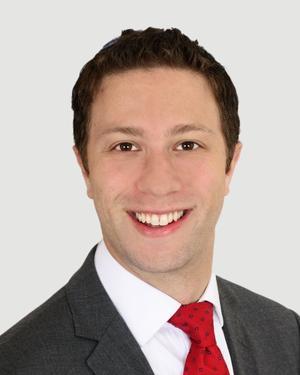Joshua Arbesman Laboratory
-
Joshua Arbesman Laboratory
- Principal Investigator
- Research
- Our Team
- Publications
- Careers
- Research News
Research
We focus on patients at extremely high risk for melanoma to uncover novel genetic mechanisms to explain their risk for melanoma development. We hope to target these in new preventive approaches.
Biography
Education & Professional Highlights
Education & Fellowships
Residency - University Hospitals Case Medical Center
Dermatology
Cleveland, OH USA
2015
Residency - University of Buffalo Hospitals
Internal Medicine
Buffalo, NY USA
2011
Medical Education - University at Buffalo School of Medicine
Buffalo, NY USA
2010
Undergraduate - Brandeis University
Waltham, MA USA
2006
Residency - University Hospitals Cleveland Medical Center
Cleveland, OH USA
Internship - University at Buffalo School of Medicine
Buffalo, NY USA
Medical Education - University at Buffalo School of Medicine
Buffalo, NY USA
Certifications
- Dermatology
Research
With a lifetime incidence rising over 12 fold in the last half-century, melanoma rates continue to dramatically rise in the United States, despite significant public health efforts to reduce ultraviolet radiation exposure, the best characterized environmental risk factor. Through the use of targeted cancer panel screening, whole exome & whole genome sequencing we propose to further characterize and/or identify novel genetic risk factors for melanoma. We will correlate this with functional laboratory work examining individual genes to better interrogate their role in melanoma. Using this functional understanding of how a specific gene is responsible for melanoma development, we will design novel preventive therapies to be used in these high risk melanoma individuals.
Our Team
Selected Publications
Sha J, Gastman BR, Morris N, Mesinkovska NA, Baron ED, Cooper KD, McCormick T, Arbesman J, Harter ML. The Response of microRNAs to Solar UVR in Skin-Resident Melanocytes Differs between Melanoma Patients and Healthy Persons. PLoS One. 2016 May 5;11(5):e0154915.
Conic R, Arbesman J. Melanoma Tumor Characteristics: An Analysis of Mutational Burden and Copy Number Alterations by Patient Age and Stage. Journal of Investigative Dermatology. 2018 May;138(5):1218-1221.
Arbesman J, Ravichandran S, Funchain P, Thompson CL. Melanoma cases demonstrate increased carrier frequency of Phenylketonuria/hyperphenylalanemia mutations. Pigment Cell & Melanoma Research 2018 Jul;31(4):529-533.
Rambhia P, Honda K, Arbesman J. Nivolumab induced inflammation of seborrheic keratoses and verrucal keratoses: A novel cutaneous manifestation. Melanoma Research. 2018 Oct;28(5):475-477.
Rambhia P, Stojanov, I, Arbesman J. Predominance of oral mucosal melanoma in areas of high mechanical stress. 2019 Apr;80(4):1133-1135.
Careers
Training at Lerner Research Institute
Our education and training programs offer hands-on experience at one of the nationʼs top hospitals. Travel, publish in high impact journals and collaborate with investigators to solve real-world biomedical research questions.
Learn MoreResearch News

Up to one in seven melanoma patients are genetically predisposed to the disease, suggesting family history may be a bigger risk factor than sun exposure in some cases.
